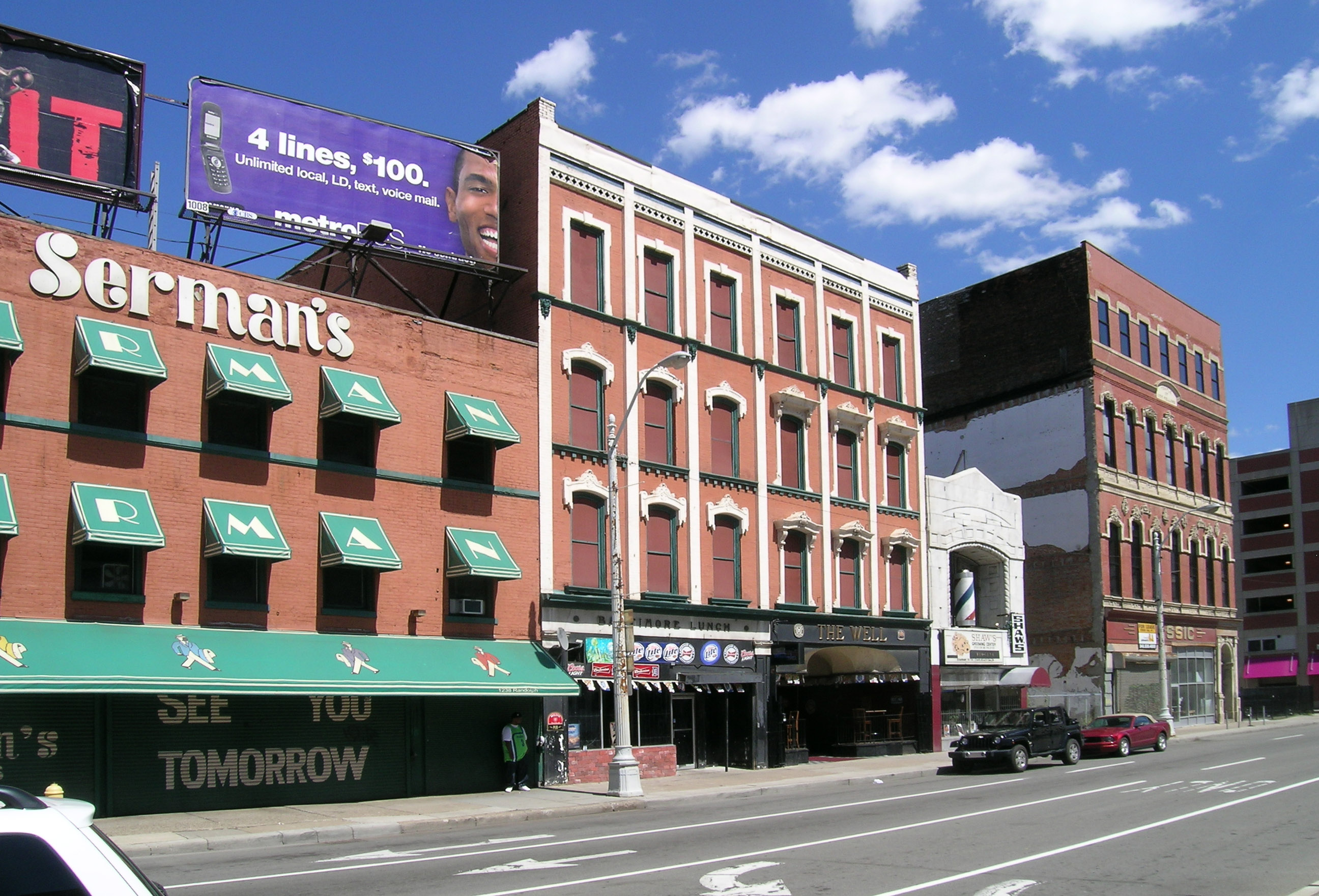- Randolph Street Commercial Buildings Historic District
Infobox_nrhp | name =Randolph Street Commercial Buildings Historic District
nrhp_type = hd

caption = 1208-1244 Randolph Street (address numbers count from right)
location=Detroit, Michigan
lat_degrees = 42
lat_minutes = 20
lat_seconds = 4
lat_direction = N
long_degrees = 83
long_minutes = 2
long_seconds = 42
long_direction = W
locmapin = Michigan
area =
built =1840
architect= Unknown
architecture=Italianate
added =July 08 ,1980
governing_body = Private
refnum=80004404cite web|url=http://www.nr.nps.gov/|title=National Register Information System|date=2008-04-15|work=National Register of Historic Places|publisher=National Park Service]The Randolph Street Commercial Buildings Historic District is an historic district located in
Detroit ,Michigan , along Randolph Street between Monroe and Macomb streets (1208-1244 Randolph Street). The collection of buildings are a rare surviving collection of Victorian commercial buildings. [http://www.ci.detroit.mi.us/historic/districts/randolph_st.pdf Randolph Street Commercial Buildings Historic District] from the city of Detroit]History
Buildings along this section of Randolph Street have been used for retail since the area was first built up in the 1840s. The building at 1244 Randolph was built during the period of original construction. As the city grew, larger commercial buildings were required and the other structures on Randolph were constructed. The area remained a shopping district into the twentieth century.
Over the years, the street-level facades of the buildings in the distric were altered numerous times, two structures had new top stories added, and a cornice removal program in the 1950s resulted in the loss of all the fine bracketed entablatures. However, the buildings still have their Victorian brickwork and metal window hoods.
Since construction of the buildings, structures in the district have housed numerous commercial enterprises, ranging from legal offices, to tailors to sculptors. In the early 1900s, the district was home primarily to dry goods and clothing establishments.
References
Wikimedia Foundation. 2010.
